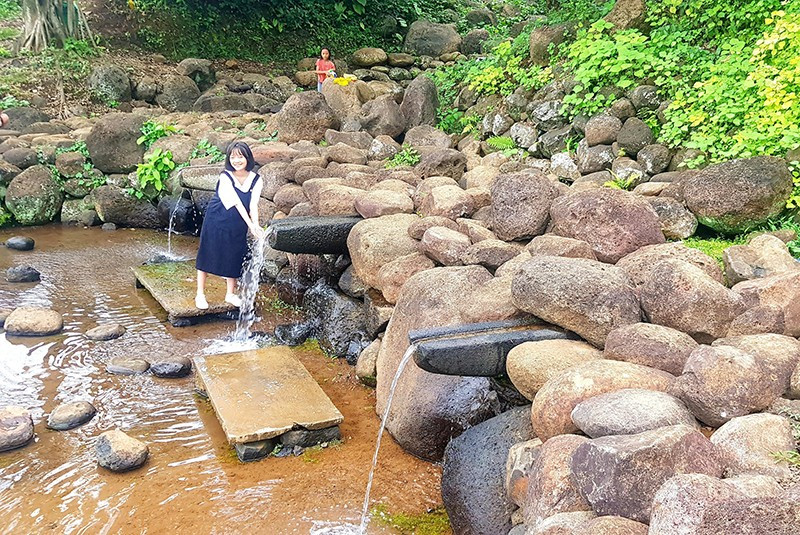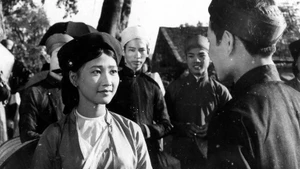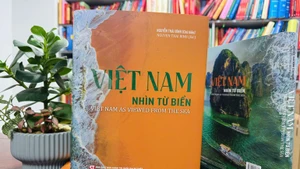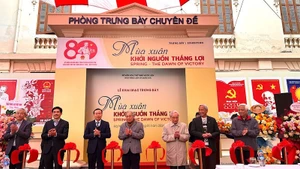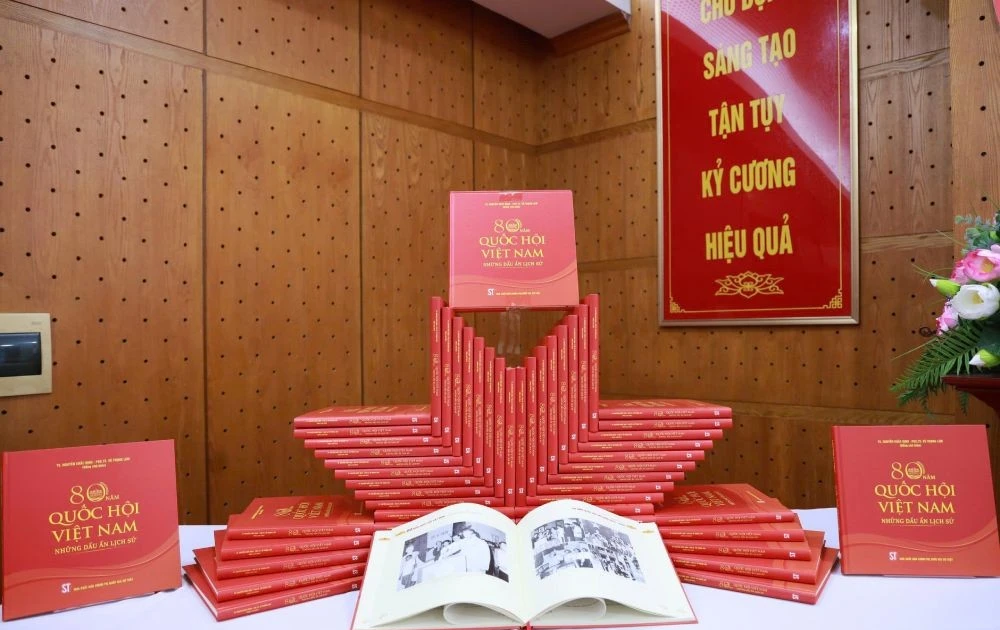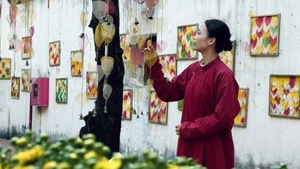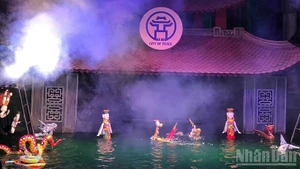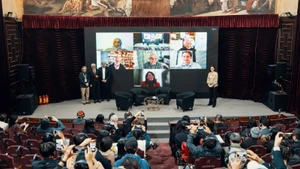The ancient Gio An water delivery water system’s outstanding characteristic is the arrangement of rocks to distribute water for agriculture and daily use. In the past, the local residents chose positions near the feet of high hills with natural water to arrange rocks into embankments, creating water wells, storage tanks, separation walls and troughs.
Unique ancient wells
The ancient Gio An water delivery system previously included nearly one hundred wells, but due to the ravage of war, not many have survived. Among the remaining wells, 14 have been selected for conservation.
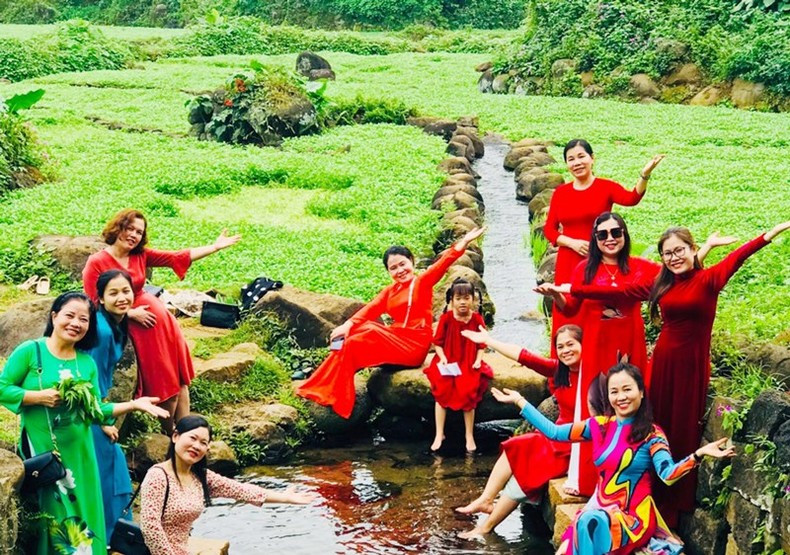 |
| Tourists at an ancient well in An Gio. |
During scorching days, we can feel the cool groundwater, which has been running for thousands of years. Immersing in the ancient wells, one can be relieved of their stress and tiredness and receive the plentiful refreshing energy.
The ancient Gio An water delivery system has two main types of structures: wells with multiple steps, and wells with sedimentation tanks. For wells with multiple steps, the highest step is the sedimentation tank, next is the spilling part and the round or oval storage tank surrounded by rocks. Water is delivered out through rock troughs for daily use. The next part of the well is a storage tank, which is usually 0.5 metres deep and 15-20 metres wide. The final part is the canal system distributing water from the storage tanks to the fields for agricultural production.
The other type of well has a simpler structure, which comprises only a sedimentation tank. The well is nearly 10 metres long and 0.5 metres deep, with rock embankments on three sides. For the wells with sedimentation tanks, one third of the well is separated to be used for drinking and no one is allowed to enter for bathing and washing clothes. All other activities take place on the remaining two thirds of the well. After groundwater runs out of the sedimentation tank, it will flow directly to the watercress field.
 |
| Domestic and foreign visitors at an ancient well. |
With its unique values, the ancient Gio An water delivery system was recognised as a national relic site in 2001. In 2019, Quang Tri Province proposed to the Ministry of Culture, Sports and Tourism that the system should be inscribed on the special national relic register.
Humans’ tactful and smart conduct
Many domestic and foreign visitors have chosen the ancient Gio An water delivery system as a unique and attractive destination. During peak days, Gio An Commune welcomes nearly 1,000 visitors to these ancient wells.
At the 2023 caravan tour programme with the theme “The Colours of Quang Tri”, visitors and tour operators from Thailand and Laos were very satisfied with visiting the ancient wells and enjoying local delicacies.
To promote and utilise the unique values of the ancient Gio An water delivery system, Quang Tri Province recently approved the task of devising a plan to conserve, renovate, and restore the 14 ancient wells.
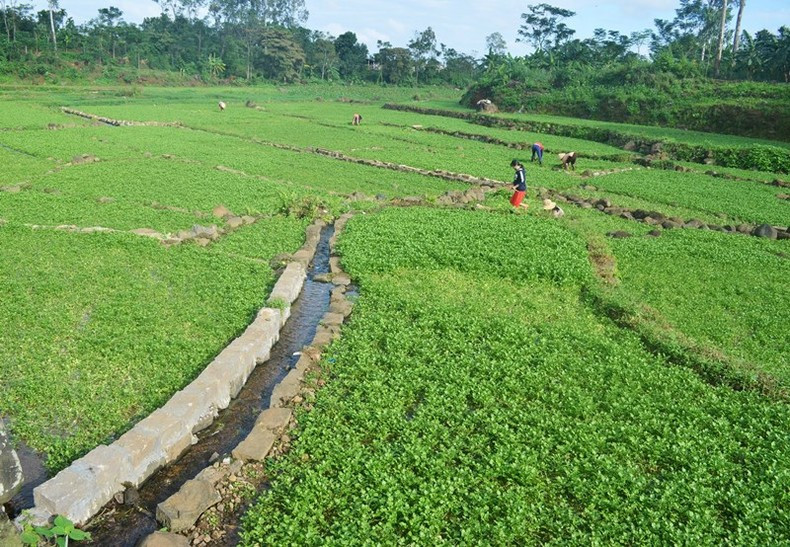 |
| Water is delivered from the wells to the watercress fields. |
According to Nguyen Quang Chuc, Director of the Quang Tri Relic and Museum Management Centre, the ancient Gio An water delivery system was created by generations of people from different ethnic groups, with the Champas playing an important role.
Research on the ancient wells has demonstrated the existence of many generations of owners, including the profound imprint associated with Lord Nguyen Hoang’s expedition to develop the Con Tien land after 1572.
From the Champas to the Vietnamese, the ancient Gio An water delivery system has gained recognition as one of the outstanding architectural and artistic works reflecting humans’ tactful and smart conduct towards nature to tap into the potential of the land where they live to serve their lives.
The goal of planning is to preserve the ancient water delivery works sustainably against natural and social impacts, create a special cultural and historical tourism product of Quang Tri and Vietnam in general, and enhance the standards of living for people inhabiting the heritage area.
 |
| Tourists enjoy local foods after visiting ancient wells in Gio An. |
